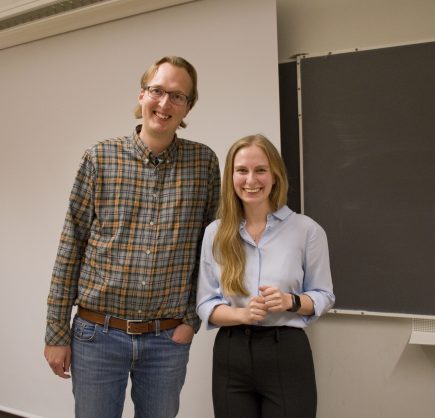On Tuesday, 14 June 2022, our colleague Sophia Axillus presented and defended her Master thesis “Joint modeling of Longitudinal and Time-To-Event data – A Comparison of Joint versus Sequential Parameter Estimation”
Abstract
Joint modeling is a technique used for parameter estimation in linked models of longitudinal and Time-To-Event (TTE) data. The goal of this is to reduce bias typically found when sequentially estimating related parameters by considering errors caused by both the models, the data, as well as between individuals (inter-individual-variability) simultaneously. The aim of this thesis was to distinguish scenarios when the joint model is suitable for use in the case of high frequent sampling. To represent the longitudinal data, we apply a K-PD model to describe the effect of an inhibition of a measurable biomarker (response) with added random effects. This response is then linked to the TTE by using a parametric hazard equation for a given set of parameters. The set of parameters for these models are estimated with Maximum Likelihood Estimation for two approaches; a sequential and joint method. The sequential approach firstly estimates the parameters related to the K-PD model and then considers the individual simulated response as a covariate in the estimation of the TTE related parameters. In contrast, the joint model considers two contributions to the likelihood by including the TTE in order to get the full set of parameters. The result of this is two algorithms based on the FOCE method. These algorithms are compared for several datasets with fixed parameter values during different conditions. By comparing metrics such as Relative Estimation Error and Relative Standard Error, we are able to show that the joint estimation approach provides less biased estimates for several different sampling frequencies. This is the case for most parameters but the difference is the largest for the parameters related to the TTE model. It is therefore concluded that for joint model frameworks, using a joint parameter estimation should be considered in the case of improving estimations when using a linked parametric hazard, especially in the case of high frequent sampling.
 We congratulate Sophia and wish her the best for the future!
We congratulate Sophia and wish her the best for the future!
